Are you considering using WordPress for your website or blog but are concerned about the cost of investing in a custom design? You’re not alone!
Many people like the idea of creating their own website or blog with an easy-to-use platform like WordPress, yet worry that it might be too expensive to invest in a paid theme when there are so many free themes available.
Using a free WordPress theme can be a great option for those who are just starting out or have a limited budget. While there are some drawbacks to using free themes, such as limited customization and possible security vulnerabilities, these can be overcome by choosing well-designed, reputable themes and implementing good security practices. Ultimately, when it comes to choosing a WordPress theme, it’s important to consider your specific needs and budget, weigh the pros and cons of different options, and select the option that best suits your goals for your website.
In this article, we will explore if using a free WordPress theme is okay and discuss the potential pros and cons of choosing to do so.
We’ll provide guidance on how to make sure any free theme you use is secure and reliable so that you can have peace of mind while enjoying all the benefits that come along with selecting a no-cost option for your site. Read on to learn more about using a free WordPress theme!
Why Companies Create Free WordPress Themes
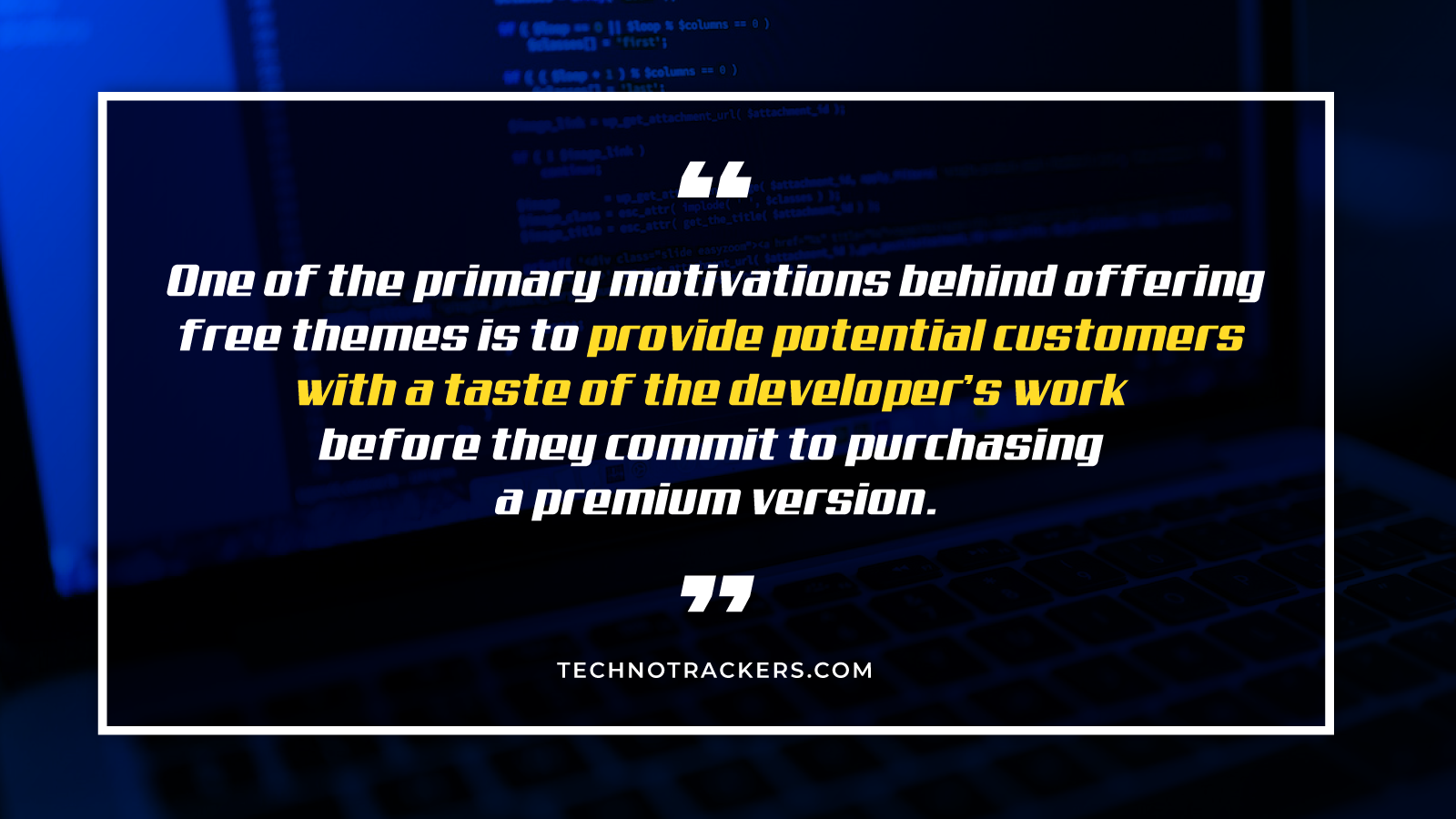
Companies create free WordPress themes for various reasons, ranging from marketing strategies to community contributions and skill development.
One of the primary motivations behind offering free themes is to provide potential customers with a taste of the developer’s work before they commit to purchasing a premium version.
By offering a free theme with limited functionality, developers can entice users to upgrade to a paid version that offers more features and customization options.
Another reason for creating free WordPress themes is to contribute to the WordPress community. Developers who are passionate about the platform may choose to offer their themes for free as a way of giving back and supporting the growth of the community.
This can also help them gain recognition and build a reputation within the industry.
Some developers create free themes to improve their skills and gain experience with the WordPress platform. By working on free themes, they can experiment with different design elements and coding techniques, ultimately refining their craft and becoming better developers.
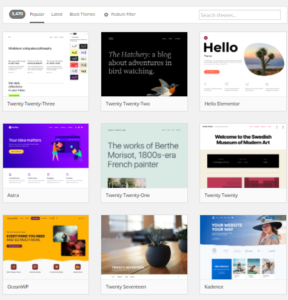
Marketing and brand exposure are also significant factors in the creation of free WordPress themes. By incorporating links in the footer of the theme, developers can drive traffic to their website and create valuable backlinks for search engine optimization (SEO).
This increased visibility can lead to more business opportunities and potential clients.
The freemium model is another popular strategy employed by developers when offering free WordPress themes. In this approach, a basic version of the theme is provided for free, while a more feature-rich premium version is available for purchase.
This allows users to test out the theme without any financial commitment, increasing the likelihood of them upgrading to the paid version if they find it suitable for their needs.
However, it is essential to be cautious when using free themes, as some developers may use them as an opportunity to insert malicious code into unsuspecting users’ websites. Always ensure that you download themes from reputable sources like wordpress.org and keep your site secure.
What to consider before using a free WordPress theme

WordPress is a popular content management system that powers more than 40% of websites on the internet. One of the main reasons for its popularity is the wide range of free and paid themes available to users.
While a paid theme comes with guaranteed support and some advanced features, a free WordPress theme can be a tempting option for those on a tight budget.
Before using a free WordPress theme, it is essential to consider several factors to ensure that the theme meets your needs and provides a secure and efficient website experience. Here are some key aspects to keep in mind:
1. Check the Source:
It is important to check the source of the theme and make sure it is reputable and trustworthy. Make sure the theme is from a reliable developer or company and not from an unknown source.
2. Quality and Security:
Free themes may lack the features and customizability found in premium themes. They can also be poorly coded, leaving them vulnerable to security risks and making them more difficult to localize. Be cautious of nulled themes or plugins, as they can introduce malware, SEO spam, and website backdoors.
3. Support and Updates:
Free themes often do not come with dedicated support or regular updates. This can lead to compatibility issues with new WordPress versions and plugins, potentially causing security vulnerabilities and conflicts on your site.
4. Customizability:
Free themes may not offer the same level of customization options as premium themes. This can limit your ability to create a unique and personalized website design that stands out from the competition.
5. Responsiveness:
Ensure that the free theme you choose is responsive, meaning it adapts to different screen sizes and devices for optimal user experience.
6. Plugin Compatibility:
Make sure the theme supports essential plugins that you plan to use on your website. Incompatibility can lead to errors and reduced functionality.
7. Reviews and Ratings:
Reading reviews of the theme can help you determine if it is a good fit for your website. Reviews can give you insight into how well the theme functions, how easy it is to set up, and what features it offers. Do some research to see if there have been any reports of security vulnerabilities or other technical issues associated with it.
8. Regular Updates:
Check if the theme is regularly updated by its developers. An outdated theme can cause security issues and conflicts with other plugins on your site.
9. Check Support:
Most free themes do not offer support. However, some developers may provide support in the form of forum posts or documentation. Make sure the theme you choose has some type of support system in place in case you need help setting it up or troubleshooting any issues.
10. SEO Optimization:
Your chosen theme should be optimized for search engines to ensure better visibility and rankings.
11. Design Quality:
Not all free themes are created equal. Some may be poorly designed and lack features. Take the time to find a theme that looks professional and offers the features you need.
while free WordPress themes can be an attractive option due to their cost, it is crucial to carefully evaluate their quality, security, and features before using them on your website. Opting for a well-reviewed and regularly updated theme with good customization options can help you create a successful and secure website.
Free WordPress Themes: Pros & Cons
Free WordPress themes offer a cost-effective solution for individuals and businesses looking to create a website without breaking the bank. However, it is essential to weigh the pros and cons of using free themes before making a decision.
- The most significant advantage of using a free theme is that it is free. This makes it an attractive option for those on a tight budget or just starting a personal blog.
- Free themes in the official WordPress theme directory are tested and approved by WordPress developers, ensuring they can be used by beginners with ease.
- Themes from the WordPress theme directory are subject to strict review, ensuring they meet WordPress's coding standards and are secure and well-coded.
- Many free WordPress themes are regularly updated with bug fixes, security patches and new features. This ensures that your site is always up-to-date with the latest version.
- Themes are easy to install, customize and manage. You can quickly update the look and feel of your site without any coding knowledge. Many free WordPress themes offer a wide range of customization options, allowing you to tailor your site to your own specific needs.
- Free themes in the official WordPress theme directory are tested and approved by WordPress developers, ensuring they can be used by beginners with ease.
- Most free WordPress themes come with support from the developer community. This means you can get help with any issues you may have while using the theme.
- There is a variety of free WordPress themes available, so you can find one that suits your project and budget.
- Themes from the WordPress theme directory are subject to strict review, ensuring they meet WordPress's coding standards and are secure and well-coded.
- Free WordPress themes may lack the robust features offered by premium themes.
- You may encounter compatibility issues with third-party plugins and extensions when using free WordPress themes.
- Free themes often lack dedicated technical support and may not receive regular updates, leaving users to troubleshoot issues on their own.
- Some free WordPress themes may contain malicious code or other security risks.
- Free themes may not have built-in SEO options or clean coding, which can negatively impact your website's search engine ranking.
- Free WordPress themes often contain advertisements or links to the developer’s website, which could negatively affect user experience.
- While free WordPress themes are typically free, they may require payment for additional features and services. This can add up over time and result in a higher cost than initially thought.
- Free themes often lack a theme options panel, making it more challenging to customize the theme to your liking.
- Since free themes are available to everyone, many websites may use the same theme, resulting in a less unique appearance for your site.
- Many free themes are not optimized for speed, which can impact page loading times.
What You Get with a Premium WordPress Theme

A premium WordPress theme offers a multitude of benefits and features that set it apart from free themes. These themes are designed by professional web developers and designers, ensuring high-quality design and functionality.
Although they require an upfront investment, the numerous advantages make them worth considering for your website.
One of the main benefits of a premium WordPress theme is its unique design. Unlike free themes, which tend to be generic and widely used, premium themes offer a variety of design elements that help create a distinctive and top-notch website for your users.
This can make all the difference in attracting potential customers and providing a seamless user experience.
Another advantage of premium themes is their user-friendliness. They come with built-in features that allow you to easily navigate your theme, make changes to your site, and adjust its appearance without any hassle.
This ensures that you can maintain and update your website efficiently, keeping it fresh and relevant.
Premium WordPress themes also provide regular updates, ensuring compatibility with the latest WordPress versions and standards.
This means that your website will continue to function smoothly and securely without the risk of losing your hard work due to outdated themes.
Tech support is another significant benefit of premium themes. Access to knowledgeable web designers who can help you navigate any issues or problems with your site can save you time and frustration.
This level of assistance is not typically available with free themes, making premium themes a more reliable choice for those who may need additional support.
Moreover, premium WordPress themes are generally faster, better optimized for SEO, and more secure than free WordPress themes. This is because they are designed with clean code and are rigorously tested before release to ensure they meet the highest standards of quality.
Additionally, premium WordPress themes often come with extensive documentation, tutorials, and user support to help users make the most of their theme.
In terms of cost, premium WordPress themes may initially seem more expensive than free options. However, the investment can prove to be cost-efficient in the long run, as the added features, support, and updates can save you time and effort.
The average price for a premium theme is around $57.54, with many starting at around $50.
Premium WordPress themes offer numerous benefits that make them worth considering for your website. With unique designs, user-friendly features, regular updates, tech support, and enhanced security, these themes can provide a superior experience for both you and your users.
While they may require an initial investment, the long-term advantages make them a worthwhile choice for creating a successful and professional website.
When to Use a Free WordPress Theme versus a Premium WordPress Theme

When deciding between a free and premium WordPress theme, it is essential to consider your website’s needs, goals, and budget. Both options have their advantages and disadvantages, and the right choice depends on various factors.
Consider using a free WordPress theme if you:
- Want to start a personal blog or a simple website with basic functionality.
- Have a limited budget and do not require advanced features or customization options.
- Are comfortable with minimal support and updates from the theme developer.
- Do not mind if your site looks similar to others using the same theme.
On the other hand, a premium WordPress theme might be the better option if you:
- Require advanced features, integrations, and customization options for your website.
- Value ongoing support and updates from the theme developer, ensuring compatibility with the latest WordPress versions.
- Seek a unique design and layout that stands out from the competition.
- Prioritize security and quality coding, reducing the risk of vulnerabilities and compatibility issues.
Before making a decision, take the time to define your website’s purpose and desired functionality. The more complex your website becomes in terms of features and user experience, the more likely you will benefit from a premium theme.
Additionally, consider factors such as responsive design, information architecture, theme options, plugin compatibility, and support when choosing between a free and premium WordPress theme.
The choice between a free and premium WordPress theme depends on your specific needs, goals, and budget. While a free theme may be suitable for beginners or those with simple website requirements, a premium theme offers greater flexibility, customization, and support for more advanced websites.
Ultimately, it is crucial to weigh the pros and cons of each option and choose the one that best aligns with your website’s objectives.
Is it safe to use free WordPress themes?
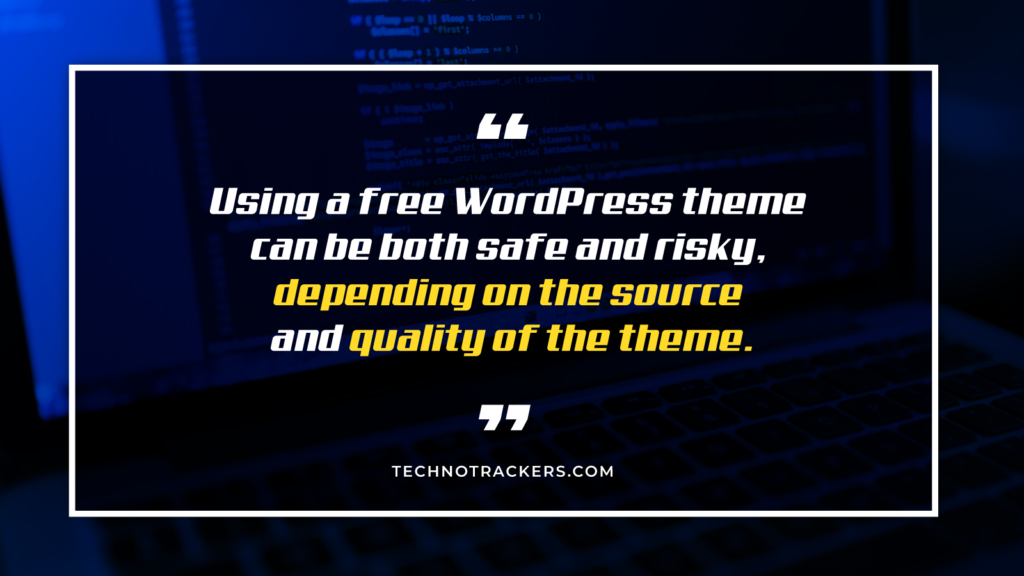
Using a free WordPress theme can be both safe and risky, depending on the source and quality of the theme.
Free themes found in the official WordPress theme directory are generally safe to use, as they undergo a strict review process that includes checks for accessibility, code quality, core functionality, features, documentation, language, licensing, naming, options and settings, plugins, screenshots, privacy, selling, credits, links, stylesheets, scripts, and templates.
These themes are developed by reputable developers and are well-coded and secure.
However, not all free themes are created equal. Some free themes, especially those found outside the official WordPress repository, may contain malicious code or viruses.
Installing nulled WordPress themes, which are pirated versions of premium themes, can be particularly dangerous, as they often contain malware or other security vulnerabilities.
To minimize the risk of using a free theme, it is essential to scan the theme for malicious code and malware infections before installing it on your website.
Are the free themes made so limited that you basically have to buy the pro version?
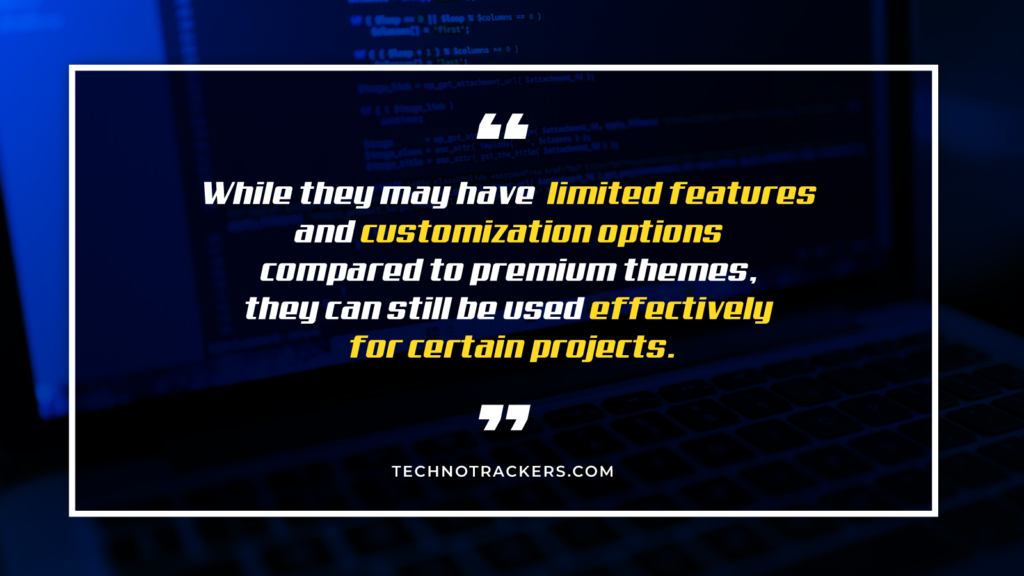
Free themes are designed to offer basic functionality and a simple design for users who want to start a personal blog or a small website without investing in a premium theme.
While they may have limited features and customization options compared to premium themes, they can still be used effectively for certain projects.
But it is true that some free themes are created with the intention of upselling users to a premium version.
These themes may offer limited functionality to encourage users to upgrade for additional features and customization options.
This freemium model allows users to test out the theme before committing to a purchase, but it can also lead to a feeling of being restricted by the free version’s limitations.
Additionally, some themes may include advertisements or other elements that can only be removed by upgrading to the paid version.
Not all free themes are intentionally made so limited that users have to buy the pro version, but some developers do use this strategy to promote their premium themes.
It is essential to carefully evaluate the features and capabilities of a free theme before deciding whether it meets your needs or if upgrading to a premium theme would be more beneficial.
How to pick your ideal free WordPress theme?
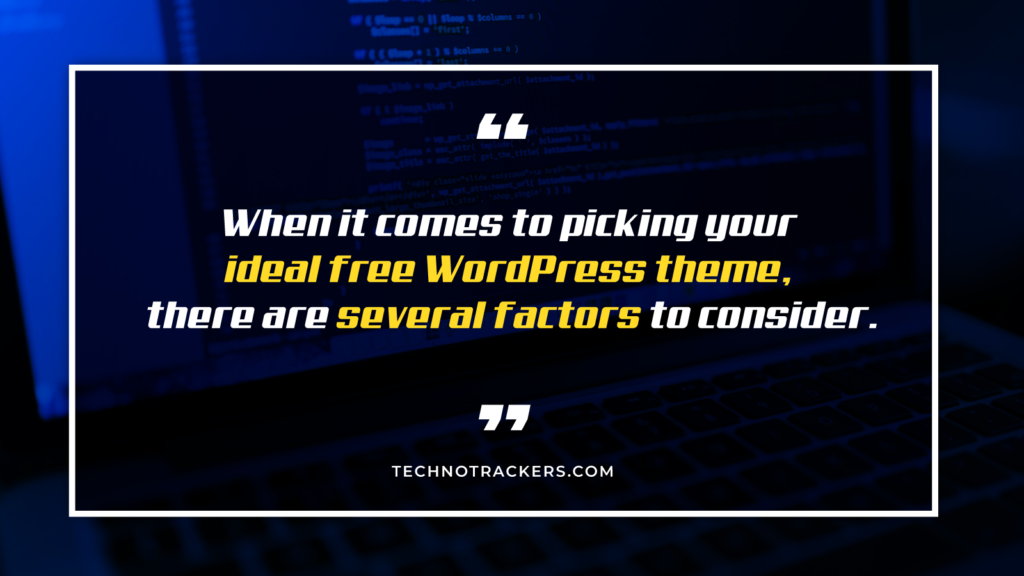
When it comes to picking your ideal free WordPress theme, there are several factors to consider. By following these guidelines, you can ensure that you choose a theme that not only looks great but also meets your specific needs and requirements.
1. List Your Requirements:
Before diving into the vast pool of free WordPress themes, take some time to think about what you want from your theme. Consider the features and functionalities you need for your website, such as a blog page, video embedding, or data-capturing options. This will help you create a checklist to narrow down your search.
2. Ensure it’s Responsive:
A responsive theme is one that looks and performs consistently across different devices, including desktops, tablets, and smartphones. With the increasing use of mobile devices for browsing the web, it’s crucial to choose a theme that offers a seamless user experience on all platforms.
3. Opt for Simplicity:
While it may be tempting to choose a theme with flashy animations and complex layouts, it’s often better to opt for a simple and minimalist design. This ensures that your website remains user-friendly and easy to navigate, without any unnecessary distractions.
4. Make Sure it Supports Plugins:
Plugins are essential for extending the functionality of your WordPress site. When selecting a theme, ensure that it supports popular plugins like WPForms, Yoast SEO, and WooCommerce, as well as any others that you deem necessary for your website.
5. Choose Something You Can Customize:
One of the key advantages of using WordPress is the ability to customize your theme to match your brand and style. Look for themes that offer customization options for elements such as fonts, colors, images, layouts, and pages.
6. Read the Reviews:
Before committing to a theme, take the time to read reviews from other users. This will give you valuable insights into the theme’s performance, support, and potential issues that you may encounter.
7. Check it’s Regularly Updated:
A regularly updated theme is more likely to be compatible with the latest WordPress updates and security patches. Look for themes that have been updated within the past six months to ensure you’re not installing an outdated or vulnerable theme.
By following these guidelines, you can confidently choose a free WordPress theme that meets your needs and helps you create a professional-looking website without breaking the bank.
Conclusion
In conclusion, using a free WordPress theme can be a viable option for those on a budget, but it’s important to do your research and choose a theme that is reputable, secure, and updated regularly.
You also need to consider the limitations of free themes, such as limited customization options and potential compatibility issues with plugins.
If you have the budget to invest in a premium theme, it’s worth considering as it will give you more flexibility and support.
Ultimately, the decision is yours, but always prioritize quality and functionality over cost.
Whether you choose a free or paid theme, remember that the most important thing is to create a website that effectively communicates your message and engages your audience.